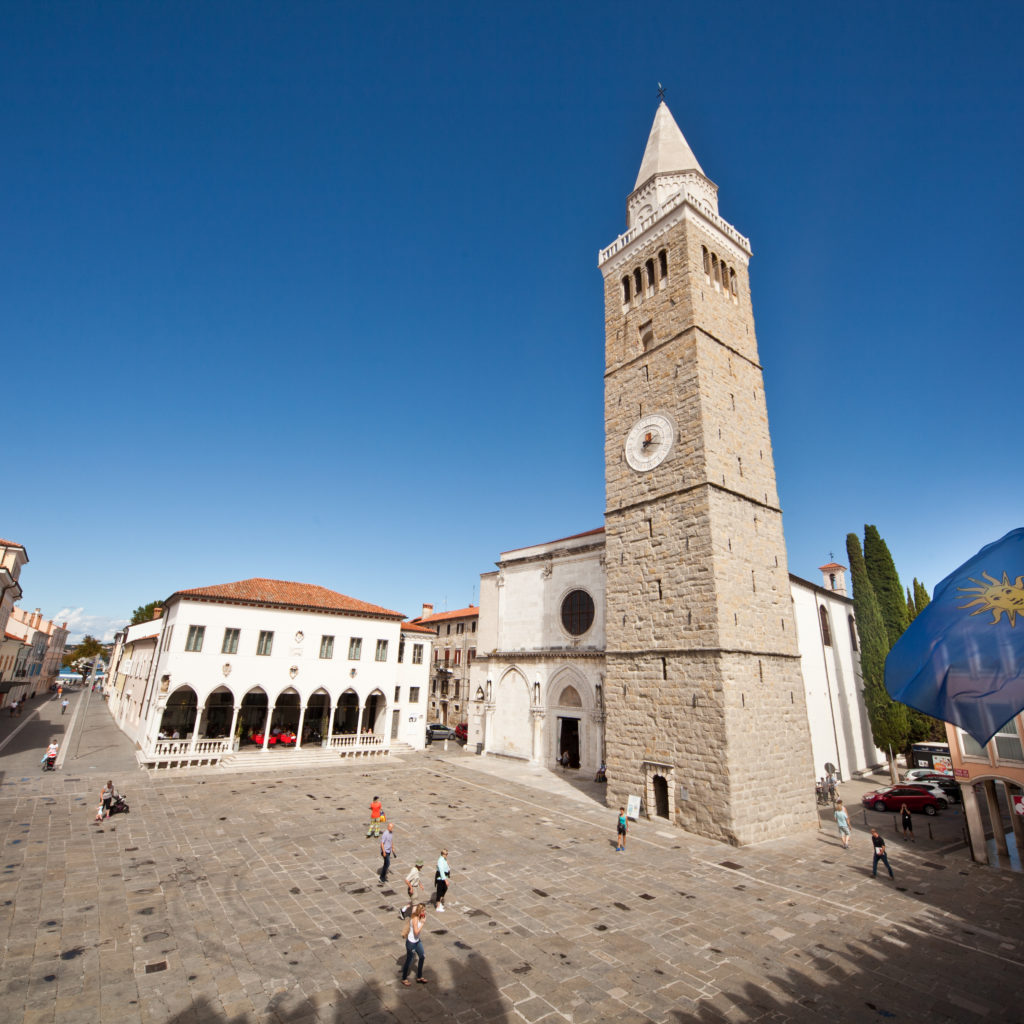An interesting legend tells the tale of the foundation of the city, according to which the island where Koper is located today was created during a dispute between the gods Poseidon and Athena. After Athena (the Greek goddess of wisdom) had a row with Poseidon (the Greek god of the sea), she supposedly escaped to this location, where a fight between these two deities ensued. During the battle, Athena’s shield (called aegida, which is supposed to be the source for the previous name of the island) fell into the water, transforming itself into an island. If you look at the shape of the ancient island (town), you will see that it actually resembles a shield.
In this area, various authorities were alternating throughout the centuries, providing different names for the town and leaving an important mark on it.
The Romans named it Capris; at the time of Pope Gregory I, Koper was called Insula Capraria (the “Island of Goats”); the Byzantines called it Justinopolis, while the Patriarch of Aquileia named it Caput Histriae. It was only the Venetians that had bestowed upon the town the Italian version of its current name, Capo d’Istria. It was also the Venetians who ruled here the longest, and who were responsible for the economic and cultural prosperity of the town whose rich architecture still reminds us of it.
For Koper, the historical period before World War I, the era of Napoleon and the Habsburgs, was also an important one.
Through the shrinkage of salt pans, Koper lost its appearance of an island. Another important period is the time when road connections with the mainland, as well as the maritime and railway connection with Trieste and Poreč, were established. The era after World War II was defined by major political changes. From the liberation until September 1947 as the peace treaty with Italy came into force, later succeeded by the 1954 London Memorandum, established in October, Koper was the centre of Zone B of the STO (Free Territory of Trieste).
By joining Slovenia (and, thus, Yugoslavia) in 1954, Koper became the centre of the region and, later, of the municipality, which in turn contributed to its economic and social progress. With the Treaty of Osimo, concluded in 1975, the border between Italy and former Yugoslavia was finally established, leaving Koper a part of Slovenia. In 1991, Slovenia gained its independence; in 2004, it also became part of the European Union.


